Mad Max Primer: Is 'Fury Road' A Sequel Or Prequel? Should You See 3D?
Mad Max: Fury Road is in theaters now, and it is a triumph. We loved it (read our review here), hell, nearly everyone seems to love it. This could end up being the best-reviewed film of the year. And for good reason: it is a staggering piece of work, and an exhilarating theatrical ride.
But with Tom Hardy replacing Mel Gibson as Max and a chronology that isn't entirely clear, we know people have questions. Is Fury Road a sequel, a reboot or a prequel, or is it something else? Do you need to see the other films first? Should you see it in 2D or 3D?
So here's a Mad Max primer to answer those questions and a few others.
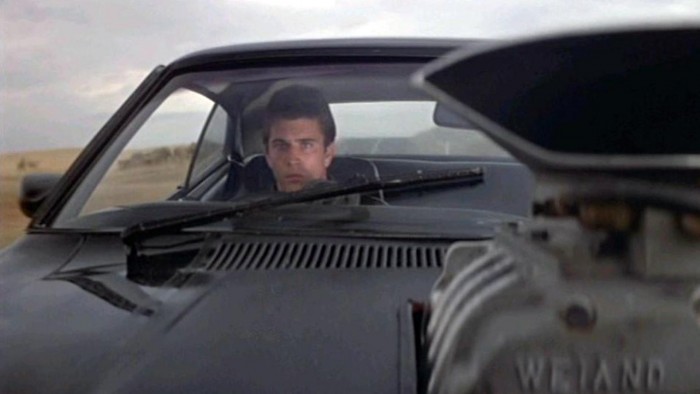
Mad Max, 1979
Is Fury Road a Remake, Prequel or Sequel?
It's not a prequel, and very definitely not a remake. The sequel question is slightly more difficult to answer. Writer/director George Miller calls it a "revisiting." This is kind of a sequel to the previous Mad Max films, but think of it like a new James Bond film after the actor has just changed over.
We're conditioned to think of series of movies as being part of an explicit chronology, but that's not how this one works. There was talk at one point of Fury Road being a film set between The Road Warrior and Thunderdome, but it doesn't play that way at all.
Tom Hardy said,
We have to take it differently as George is taking it. It's a relaunch and revisit to the world. An entire restructuring. That's not to say that it's not picking up or leaving off from the Mad Max you know already, but it's a nice re-take on the entire world using the same character, depositing him in the same world but bringing him up to date by 30 years.
Miller said at SXSW this year,
It's sort of a revisit. The [previous] three films exist in no real clear chronology, because they were always conceived as different films.
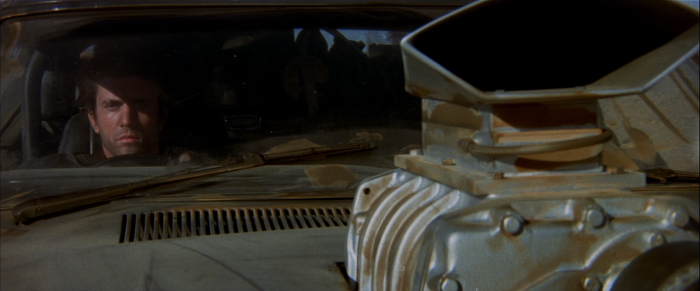
Mad Max 2, aka The Road Warrior, 1981
Do I Need to See the Other Films First?
No. Fury Road establishes everything you need to know about the characters and world.
I mean, you should see the other movies, because they're good (Mad Max), great (The Road Warrior), and very uneven but with some really excellent bits (Thunderdome). But if this is your first ride with Max, this movie tells you everything you need to know.
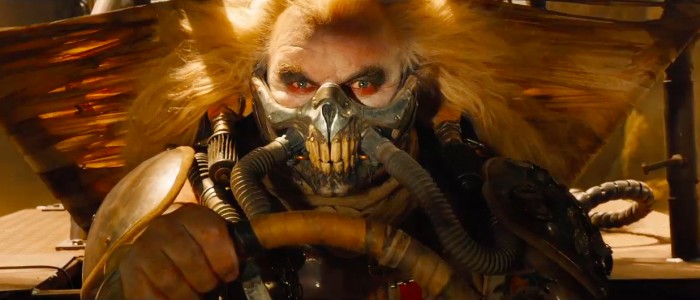
Hugh Keays-Bryrne from Mad Max returns to play Immortan Joe.
But Isn't an Actor From the Original Mad Max in This One?
Yeah, he is. You might have heard that Hugh Keays-Byrne, who plays the main bad guy in the new film, also played the bad guy in the original movie. That's true, but they're different characters. There's no connection between them at all.
This is the second time Miller has used a major actor twice in Max's films — Bruce Spence played two very similar but ultimately different characters in The Road Warrior and Mad Max Beyond Thunderdome. And the look of the Thunderdome character Scrooloose seems to have influenced the design of the War Boys (like Nicholas Hoult's character) but there's no link between them.
***
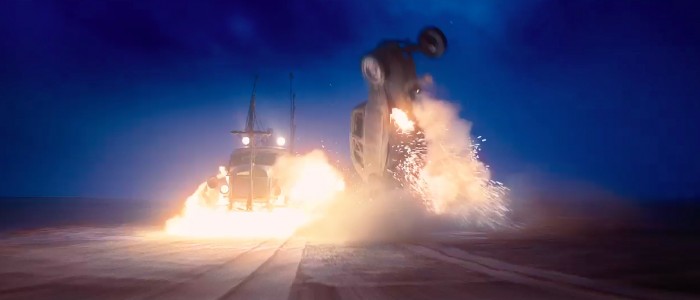
The action is insane whether you see it in 2D or 3D... and 2D makes seeing all the weird details easier.
Should I See Fury Road in 3D?
Our advice would be to see 2D if you have a choice — this is a film with an incredible amount of constantly-moving detail, and 2D is going to be the best way to see all of that. Seriously: nearly every frame in this film is bristling with little thoughts and concepts. There's a whole world here, and you want to see it all.
When George Miller had the chance to present the movie to press for the first time here in Los Angeles, he showed the film in 2D. That's a pretty good endorsement.
That said, I'm catching the IMAX 3D presentation this weekend out of curiosity, and if you have access to a theater with reliably bright and well-calibrated projection, it should still look great in 3D. Plus, there are a couple bits in the film that are clearly designed as 3D gags.
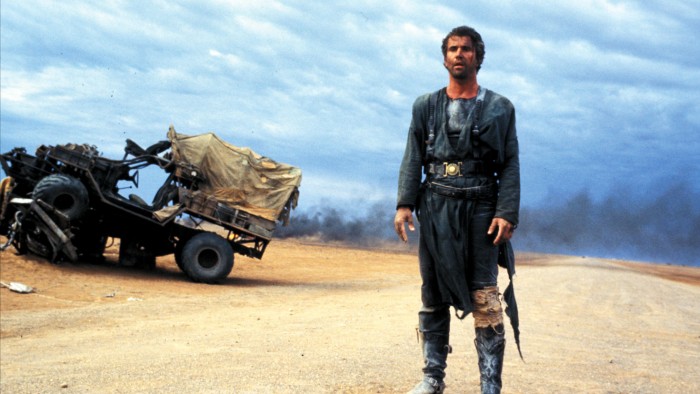
Mad Max Beyond Thunderdome, 1985
Can You Recap the Other Mad Max Films?
Sure! We'll make this quick and as non-spoiler as possible.
The original Mad Max, released in 1979, established Mel Gibson's character Max Rockatansky, a cop in a society that had mostly broken down, and who is pretty much broken down himself by the end of the film. It's a pretty small movie with a group of cops in conflict with a gang led by a poetic villain called The Toecutter. The bad guys want revenge for the death of one of their own, and the cops go after the gang for their flagrant bad-ness. Max is kinda caught in the middle, and it isn't until the gang violently impacts his own life that he really goes into "mad" mode.
The Road Warrior, from 1981, is the film most like a chronological sequel in the series than any other. Max, driving the same car and bearing his wounds from the first movie, comes across a motorized gang besieging a stronghold built around an oil well and minor gasoline refinery. Pulled into that conflict, Max looks out for himself throughout, but ends up helping the oil refiners in their attempt to escape the gang forces led by a hulking but well-spoken chieftain who calls himself Lord Humongous. The Road Warrior is the movie that really made this series weird, and it
(The film is really called Mad Max 2, but was retitled for US release; the thinking was that not enough people knew what Mad Max was.)
The third film, Mad Max Beyond Thunderdome, from 1985, is even more loose as a chronological sequel, but close enough. Max, in pursuit of stolen property, meanders into Bartertown, a rough attempt at civilization jump-started by the entrepreneurial Aunty Entity (Tina Turner). A power struggle in Bartertown leads Max to shelter in a cove inhabited by a Lost Boys-like band of kids who think Max is their savior.
All three films end with Max essentially alone, and The Road Warrior and Thunderdome are both narrated by characters who place Max in a position of near-legend.
The implication in Fury Road is that this is yet another sequel, but aside from the character's name, his survival skills, a fondness for vehicles, and disintegrating mental state, there's not much here to explicitly connect this Max to the guy played by Mel Gibson. There are some visual signifiers — the Interceptor, his knee brace — but they don't do much to establish when this movie takes place relative to the previous three.
***
We'll have a lot more on Mad Max: Fury Road next week, including a lot of info on the making of the film, and more conversation about what's actually in it.
